 Over the past two years, I have become a Swiftie for various reasons. Not only is Taylor Swift an incredibly talented singer, songwriter, and performer, but she also pours creativity and care into engaging with her fanbase. Taylor invests an incredible amount of time and energy finding innovative ways to connect with them. I am especially intrigued by the creative way she embeds Easter eggs throughout her work to pique the curiosity of her fans. In an interview with Jimmy Fallon on the Tonight Show (shown below), Taylor Swift shared that she began doing this when she was creating her first album because she wanted to find a way to incentivize fans to read her lyrics because it is what she is most proud of. Genius! As teachers, we pour our heart into creating lessons, and don’t we similarly hope that students will pay closer attention to the content we create for them? Inspired by Taylor Swift’s creative engagement strategies for capturing her fan's attention and connecting with them, let’s explore ways to bring similar excitement into learning to add your own classroom magic! Secret Codes One of Taylor Swift's strategies is hiding Easter eggs in her song lyrics. Watch this video clip of Taylor Swift explaining how and why she does it. In this interview Taylor says, “When it got out of control was when I realized it wasn’t just me that was having fun with this, they were having fun with it too.” Joy is contagious. It’s clear she enjoys creating this immersive experience for fans, and their excitement for joining in on the hunt motivates her to continue. We can take Taylor’s inspiration and generate a similar experience for our students to engage and bring fun into learning. Take a look at this Snickerdoodle recipe below. Can you spot the hidden message? Within the recipe instructions, certain letters (that wouldn't be normally) are capitalized. When you piece them together, they spell out "MAGICAL." This technique can be used in any subject to reveal important keywords or clues. Create codes in directions, activities, and other written or digital documents. You can start with more obvious codes and then make them more cryptic as students learn to look for them. The fun thing about this idea, is you don’t have to build in time for it. In fact, you don’t even need to tell students there is something to look for. Let them discover it for themselves. Most likely, those who are paying closer attention will find it first. This may encourage other students to pay closer attention as well. You can decide what happens when the secret code is discovered. In the example above, you could incentivize with a glass of milk to drink with the Snickerdoodles when they come out of the oven, or maybe they can earn a cup of chocolate chips to mix in the batter. Discovering the code could unlock a choice of activity or assignment in a core subject area. Or, you could create chance cards that include things that students always ask for, such as sitting in the teacher’s chair, leaving class a minute early, or sitting by a friend. Students who discover the secret code, could select a card out of a treasure box and redeem them at a time of choice. What possibilities could you come up with to bring Secret Codes into your classroom learning? Scavenger Hunts Taylor’s Easter eggs don’t stop with lyrics. She also loves to embed hidden messages and clues throughout her music videos, social media accounts, and concerts to create a scavenger hunt for her fans. Here is another video clip of Taylor explaining how she does it. This video is even more evidence of how much fun she has creating these experiences for her fans. So much so that she not only creates a scavenger hunt, she also creates tiers for the types of hidden messages and clues she embeds into her content. Let’s think about what this could look like in classroom learning. Consider having a locked “treasure” box set up for every unit of study. If you have access to BreakoutEDU boxes, you could use those, or you could buy a toolbox at your local hardware store and a number and letter locks to secure it with. Lock something related to the unit’s content inside with an award. Throughout the unit, hide clues and hidden messages in various physical and digital locations.
To Swift-ify this idea further, you can create tiers for your scavenger hunt: Tier 1: Codes hidden in recipes, directions, or activities reveal a secret word Tier 2: Secret links hidden in digital content lead to a photo or video clue Tier 3: QR codes hidden in physical locations must be scanned to retrieve the clue Hide one or two clues from each tier per unit. Each clue found is a puzzle piece to solving the lock code securing the treasure box. The more clues found, the better the chance of unlocking the treasure! In a recent Facebook Sunday Night Live episode where I shared this idea, the author of Teach Like a Pirate, Dave Burgess, suggested setting up an experience where no one kid could solve the puzzle completely on their own. Students would have to rely on each other to piece the clues together, emphasizing the need for collaboration. Brilliant! If your students work in teams or groups, maybe you give different clues to different groups. They will need to combine them to solve the lock! Infusing creativity, collaboration, and curiosity together creates magical learning experiences for students! Code Word If you are intrigued by these ideas, but would rather ease into embedding Easter eggs in classroom learning, think about creating a Code Word each unit. Use the word creatively in written material and weave into your demonstrations and verbal instructions. You could have a treasure box set-up with a word lock each unit with the code word being THE code that unlocks the secret treasure. In this scenario, you wouldn't need to create multiple clues, it could all revolve around this code word. Another possibility would be to create a Google Form with response validation, so when students figure out the code word, they type it into the Google form, and it unlocks to reveal a special message or link to treasure. Each one of these Taylor Swift-inspired ideas have infinite possibilities for classroom learning in any grade level or subject area. By adding a sprinkle of Taylor Swift's magic into your lessons, you can ignite curiosity, connect with your students, and make learning an unforgettable experience for your students. And, I bet you will have as much fun hiding the Easter eggs as they will have finding them! So, are you ready to Swift-ify classroom learning? Share your ideas on X or Instagram and make sure to tag me @tishrich on X and @tishrichmond on Instagram. Can't wait to hear what you come up with!
0 Comments
I had so much fun capturing my 2023 highlights and then turning them into a song, blog post, and poem using Canva! I first wrote my highlights in this template:
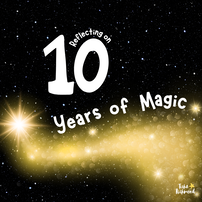 2014. It was the pivotal year I was contemplating escaping education. I had lost my joy for a profession I once loved. A set of ipads and an edtech conference began a series of steps to rediscover my joy for teaching and unlock a magic I'd never experienced. Today as I take a moment to reflect on the past ten years, I am humbled and filled with gratitude for every person who has showered me with encouragement, provided me with opportunities, challenged me to take risks I never dreamed of, and believed in my full potential. The past 10 years have been magical, but I dare to dream that a new era of magical possibility is just beginning. 2014: Ipads entered my culinary arts classroom. Attended my first two edtech conferences Discovered Teacher Twitter 2015: Began disrupting what learning looked like in my classroom. Wrote my first blog post. Began co-hosting #XPLAP Twitter Chat with Michael Matera. 2016: Began taking big leaps by embracing innovation and connecting with educators from around the world. My gamified culinary adventures began. Presented at my first edtech conference. 2017: Fueled by a renewed joy and passion for education, I embraced the power of play in my classroom and committed to tell my story. Signed my first book contract with Dave Burgess Consulting. GratitudeSnaps with Tara Martin was born. Delivered my first conference keynote at Washington Family and Consumer Science Conference. 2018: My first book, Make Learning Magical was born!! Recipient of the Medford School District Golden Pear Secondary Educator Award 1st place winner of the Henry Ford Innovation Nation Educator Award Began a new adventure as a district Tech Integration Specialist in the Medford School District. 2019: The Make Learning Magical Podcast was born. Celebrated 100 blog posts 2020: Found Magic in the Midst of the Madness. Interviewed many amazing guests on the Make Learning Magical podcast 2021: Created new games for remote learning, Blended like Mary Poppins Said goodbye to a magical educator and friend, KathiSue Summers 2022: Began consulting for Canva for Education. My son, Tommy Richmond, and I signed our first children’s book contract with Dave Burgess Consulting, Inc. Co-founded Southern Oregon CUE with Lisa Yamashita Earned my Principal license through Southern Oregon University 2023: Moved fully into educational consulting. Began the Spark Joy in EDU podcast with my friend and colleague, Elisabeth Bostwick. Collaborated and published the EduProtocols Companion Guide, Book 1 with Jon Corippo and Marlena Hepbern through Dave Burgess Consulting, Inc. Our children's book, Dragon Smart, is born! 2024: The year of the dragon! I will be presenting with my son, Tommy, for the first time at IdeaCon 2024! Excited for a year of new opportunities and magical adventures! 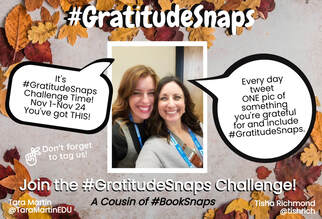 It's time for our 7th annual #GratitudeSnaps Challenge! Each November of gratitude has found us in a different chapter of our story and yet, it always seems to come at the perfect time. When people begin to flood the Twittersphere with an outpouring of gratitude and love, you can't help but feel the joy. I am almost giddy with excitement to announce that #GratitudeSnaps 2023 is launching Wednesday, November 1st! Listen to Tara Martin and I share the #GratitudeSnaps origin story on the Make Learning Magical Podcast and read our original blog post! Then, join us! It will bring joy to your heart, I guarantee it!! We are also excited to share new custom Canva templates that you and your students can use to create and curate your #GratitudeSnaps! Click on the buttons below for the template and a video tutorial! Co-Written with, Tara Martin @TaraMartinEDU
What? The #GratitudeSnaps Challenge is as easy as 1-2-3. Focus each day on one thing for which you are grateful. It could be a thing, a person, a feeling; it’s personal to you. Who? Educators, students, community members...anyone who would like to participate is more than welcome. The more positivity we can flood the world with, the better. How?
Post it to Twitter including #GratitudeSnaps & tag us @TaraMartin EDU and @tishrich. When? Let’s begin our 24-days of #GratitudeSnaps on Wednesday, Nov 1st, 2023. It will last until Thanksgiving, November, 23rd. You're welcome to keep it going; there is certainly no "time frame" on being grateful. The world has plenty of negativity, let’s spread a grateful attitude! We have so much of which to be thankful. It was August of 2006. I was shopping in the produce section of the grocery store when I received a call from a vice principal at a local high school asking if I’d be interested in applying for a half-time Career & Technical Education/Family & Consumer Science position teaching culinary arts and interior design. I will never forget that moment because it had taken me completely by surprise. Five years prior, I had taught high school Family and Consumer Science in San Diego, but had decided to stay-at-home with our daughter, two at the time, when we made the move to Oregon. Our son was born a year later and I settled into life at home with our littles. I was content and hadn’t been thinking at all about going back to teaching, but something was beckoning me to pursue this call. My son had just started preschool, I would be teaching two subject areas I loved alongside my own high school Family & Consumer Science teacher, and I would still have flexibility to help in my children's classrooms. The weeks that followed were a whirlwind as I accepted the job and was swept back into the world of public education. I'm so glad I decided to take that leap into the unknown. The past seventeen years serving in my district have been the most challenging and rewarding years of my life. I have taught thousands of amazing students, led both our CTE department and a small school within our high school, and transitioned to a district role as both a Tech Integration Specialist and Student Engagement & Professional Development Specialist. I've grown exponentially as an educator and leader as I’ve collaborated with incredible colleagues and have been led by amazing administrators that have mentored and supported me. In two weeks, I'll be turning in my keys and my badge. My email and Google Drive will disappear. I’m stepping out of public education into a world of educational consulting that is uncertain. I’ve resigned. I don’t know why that word sounds so negative to me. Every time I hear it I cringe a little. I am not leaving because I’m unhappy…not even a little bit. I’m leaving because something is tugging at my heart much like it did that day in 2006 when I was in the produce aisle. There are people beyond my district that I need to serve. There are passions I’ve yet to pursue. There are dreams I need to chase. Is it scary? Absolutely. Am I sad. For sure. I’ve invested my whole heart into each school and district role that I’ve served. I’ve partnered with incredible educators and leaders that center their work around what’s best for kids. I’m a completely different educator than the one who ran out of a grocery store on an August afternoon to pursue something new. However, the last ten years have taught me that outside of my comfort zone is where the magic happens. Every leap I’ve taken has brought me to new learning, new opportunities, and more magic than I could have ever imagined. I know that this leap will be no different. If I take the risk, I will find magic on the other side. To every colleague I've had the honor to work and collaborate with, to every school and district leader that saw something in me that I didn't, thank you from the bottom of my heart. I will forever be grateful to all of you for believing in me, supporting me, and helping me grow into the educational leader I am today. It has truly been an honor to serve with you. It has been an incredible journey rich with memories that I'll always hold dear to my heart. It's hard to say goodbye, yet, suddenly I know..."It's time to start something new and trust the magic of beginnings" -Meister Eckhart
|
Tisha RichmondStudent Engagement & PD Specialist in Southern Oregon, Canva Learning Consultant, Canva Education Creator, and author of Make Learning Magical. I'm passionate about finding innovative ways to transform teaching and create unforgettable experiences in the classroom. |
- HOME
- SPEAKING
- ABOUT ME
- BLOG
-
RESOURCES
- Memorable Beginnings >
- Authenticity & Agency
-
Gamified Experiences
>
- Anywhere Learning Plans
- The Amazing Race Game Plan Resources
- The Race to the Golden Ticket
- Ready Player One
- The Amazing Food Truck Race
- The Great Interior Design Challenge
- The Final Table Challenge
- Challenge Rubrics
- Challenge Ideas
- Kitchen Utensil Race & Other Variations
- Code Names for the Classroom
- Badges
- Innovation
- Creativity, Curiosity, and Collaboration
- Authentic Audience
- Legacy
- Make Learning Magical Book
- PODCAST
- T-SHIRTS
- YOUTUBE
-
RECIPES
- Workshop & Session Resources
- Dragon Smart Reviews
Proudly powered by Weebly


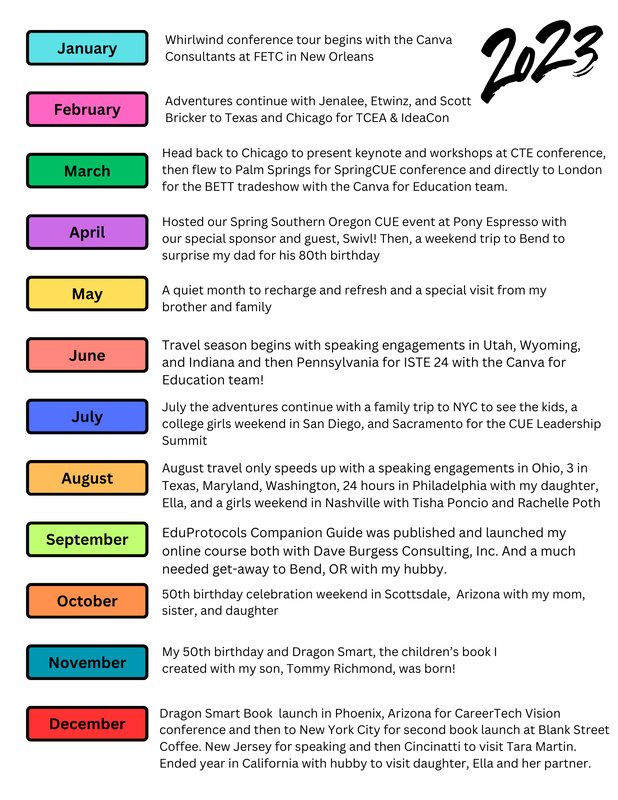
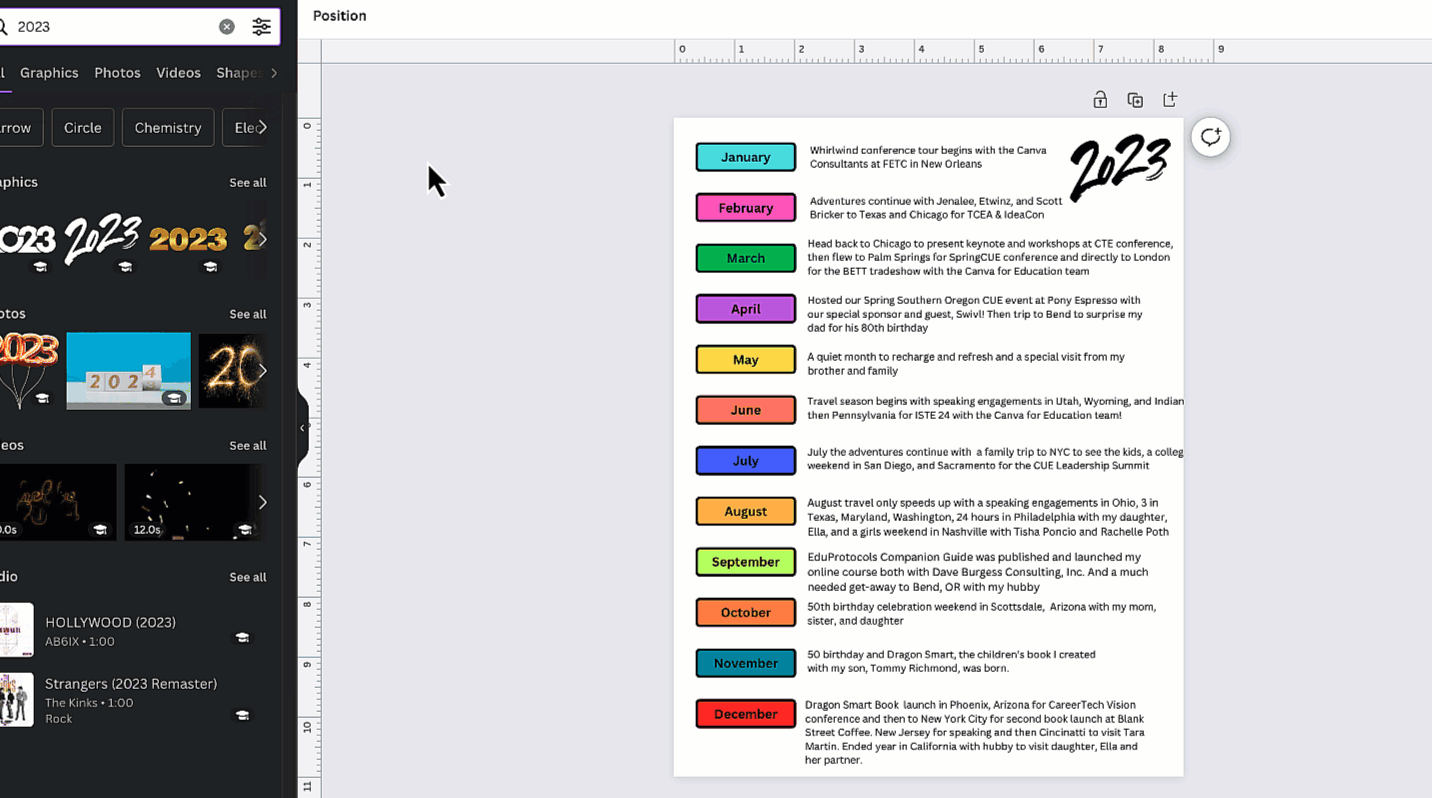
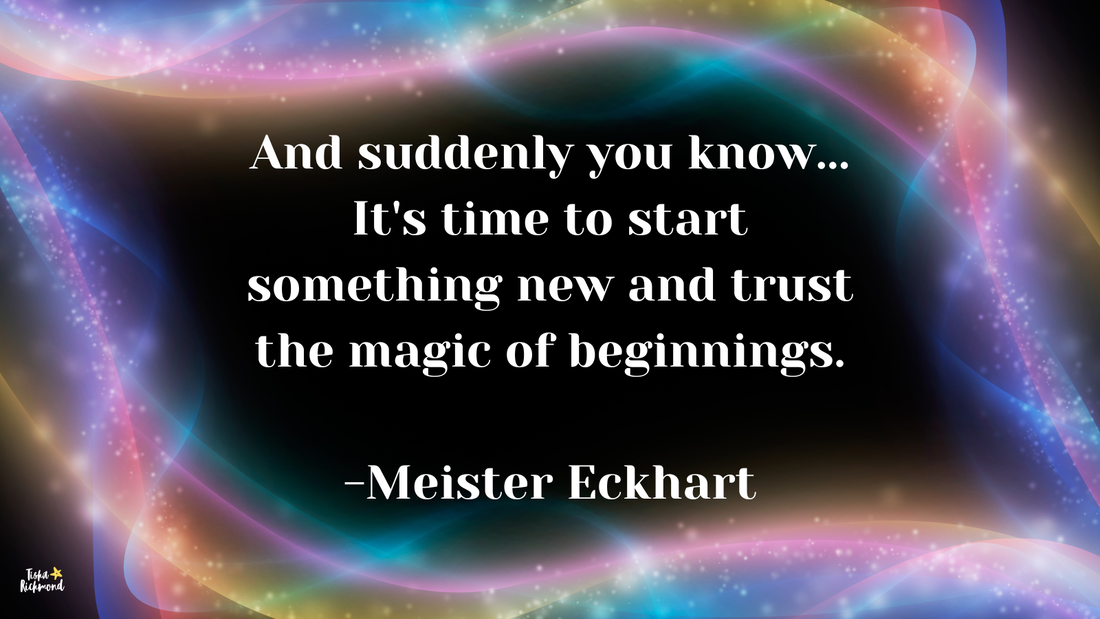
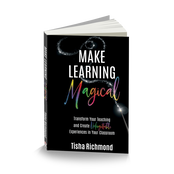

 RSS Feed
RSS Feed